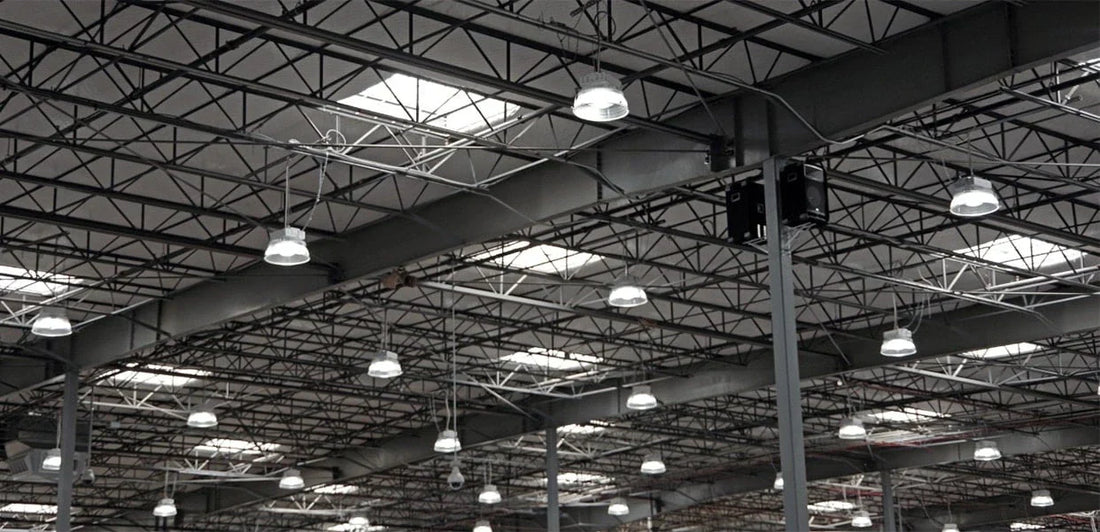
LED Lighting Australia: A Complete Guide to Energy-Smart Living
I remember the first time I swapped all the old bulbs in my Melbourne flat for LEDs – it felt like upgrading from dial-up to broadband. Suddenly, my place was brilliantly lit, my electricity bill dropped, and I hardly climbed a chair to change a burnt-out globe every few months. LED Lighting Australia isn’t just a trendy buzzword; it’s a shift in how we brighten our lives. From sun-drenched Brisbane afternoons to chilly Melbourne winters, Aussies are waking up to the bright idea that going LED is the energy-smart way to save money.
LED bulbs (Light Emitting Diodes) aren’t new, but they’ve gone mainstream. They use far less juice than incandescent globes – think a 10-watt LED replacing a 60-watt halogen. That’s up to 90% less electricity right off the bat. Less power means lower aircon bills in our 40°C summers, too, since LEDs convert almost all energy to light (not heat). The official word? Australia’s federal Energy.gov.au lighting guide notes LEDs use “up to 75% less energy” than halogen bulbs.
In short, flicking every light in your house to LED can make a serious dent in power usage and greenhouse gases.
But let’s be honest: beyond the numbers, LEDs are just cool. You can dim them by voice, set funky colors for movie night, or hide slim strip lights under cabinets for a slick modern look. They get the job done and look great doing it. Over the next sections, we’ll unpack why LED Lighting Australia is more than a fad – it’s a key piece of the energy-smart living puzzle for Aussie homes and businesses alike.
Why LED Lighting is a Bright Idea
Switching to LED lights makes your wallet do a happy dance. Here’s the lowdown:
-
Energy efficiency: LEDs shine bright on a shoestring budget. Replace a 60W globe with a 10W LED and you still get the same glow – that’s up to 90% less power. Year-round, this slashes your power bill and relieves the grid.
-
Lower bills: Less energy use = real money saved. Many households report a noticeable drop in quarterly bills after going LED. It’s like putting your meter on a diet!
-
Longevity: LED globes are marathoners, often lasting 20,000–25,000 hours – years of nightly use. Change a globe once a decade, not every few months.
-
Fewer emissions: Because LEDs sip power, they cut greenhouse gases. Official figures say up to 90% lower CO₂ emissions than old halogens. Even compared to CFLs, LEDs emit half the carbon and contain no toxic mercury. That’s kinder to our planet (and cleaner to throw out).
-
Instant On & Better Light: No warm-up needed – flip a switch, and LEDs brighten instantly. They come in warm or cool whites (and even colors), so you set the perfect mood in any room.
-
Built Tough: Designed for Australian life, LEDs shrug off bumps and temp swings that would fry old bulbs. Many are water-resistant, making them perfect for patios or outdoors.
And don’t just take my word for it: EnergyAustralia notes LED lighting “can help your business use less energy” and cut costs thanks to their long life. In other words: better lighting, lower costs. Even the government’s official lighting guide confirms LEDs use up to 75% less energy.
|
Feature |
Incandescent (Halogen) |
Compact Fluorescent (CFL) |
LED Lighting |
|
Energy Use |
~60 W for ~800 lm |
~13 W for ~800 lm (≈78% less) |
~10 W for ~800 lm (~85% less) |
|
Lifespan |
~1,000 hours |
~8,000 hours |
25,000–50,000 hours |
|
CO₂ Emissions |
Baseline (100%) |
~50% lower |
~90% lower |
|
Toxic Materials |
None |
Contains mercury |
None |
This comparison shows why LED Lighting Australia is the smart choice. Government guides even note LEDs last up to 25 times longer than incandescents, cutting waste and replacement costs. Over time, the savings stack up. In fact, studies suggest that if every Aussie home went LED, the freed electricity could power millions of electric cars or heat pumps for free. Every LED we install adds up in the big picture of savings and cleaner air.
LED Lighting Australia in Home Design Trends
Beyond saving money, LEDs let you express style. Modern Aussie homes (and Sydney penthouses) use LED lighting as a design feature. Picture this: a hidden LED strip glowing beneath your kitchen island, or color-changing bulbs setting the party vibe in the living room. It’s like giving your home a secret stylist.
Interior designers love LEDs. They’re super thin and flexible – run them along walls, cabinets or ceilings without bulky fixtures. Zephyr + Stone (top Aussie designers) point out that LED strips can tuck into cupboards, highlight artwork, or light up a stairwell in seconds. For example, a slim strip under your kitchen cabinets bathes the benchtop in clear light exactly where you need it. Floating shelves with hidden LEDs look ultra-modern too.
Tip: Think beyond ceiling globes. LEDs shine under floating shelves, inside glass cabinets, or along bathroom niches for a luxe spa feel. Even outside, string solar-powered LED festoons on the patio for eco-friendly ambience.

And let’s not forget smart LEDs. Many LED bulbs are “smart home ready” – they connect to Wi-Fi and play nice with Alexa or Google Home. You can dim them, change colors or set schedules with a tap or voice command (ever tried “Alexa, movie mode” and your room dims to zero? Magic).
The future is bright and techy. Outdoor areas get an LED glow-up too: solar-powered LED garden lights mark pathways with no wiring. Aussie cafes and bars even use color-changing LED signs to catch your eye. In short, LED Lighting Australia means you can go green and look cool doing it.
Beyond the Bulb: Solar & Industrial LED Solutions
It’s not just indoor bulbs – LEDs are lighting up streets and industries across Oz.
Take solar street lights – lights on poles that eat sunshine by day and glow at night, with zero grid draw. Councils across Australia install these off-grid LED street lamps on bike paths and car parks. They charge solar panels in daylight and light up roads when it gets dark. No mains wiring means lower installation costs and they work even during blackouts. Green Frog Systems explains solar street lights cut energy bills and run maintenance-free. They’re pollution-free and perfect for remote Aussie roads (no power lines needed).
Image: A once-dark mine tunnel now brightly lit by robust LED strip lights. Australian underground mines invest in specialized LED mining lights – heavy-duty strip lamps and floodlights – to brighten tunnels for safety and productivity. These fixtures are built to handle the roughest conditions: shockproof, waterproof and dustproof. In fact, mines report up to 20% better performance and 60% lower maintenance once they switch to LEDs. Many of these lights come with multi-year warranties (often 5–10 years) and run for a decade without needing a replacement. It’s a no-brainer underground: brighter light, lower energy use, safer workers.
On the more whimsical side, solar-powered LED lanterns are a hit for Aussie backyards and remote camping. I’ve seen string lights powered by little rooftop panels, twinkling at night without a power bill. Even innovative “LED skylights” exist: a solar panel on the roof powering an LED fixture indoors that mimics daylight. It’s like having the sun in your ceiling – all free energy from our blue skies.
Saving Money and the Planet
By now you’ve got the picture: LED lighting does wonders for your wallet and the environment. Every unit saved adds up to real gains.
Economically, the savings are huge. Signify (Philips) estimates that if Australia switched ALL our lights to LEDs, it could shave A$8.1 billion off power bills each year and cut 7.9 million tons of CO₂ annually. That’s like cancelling thousands of Sydney–Melbourne return flights! Even a smaller scale: swapping 20 household bulbs to LED could save you tens of dollars a year on your bill.
Governments know this too. In 2023, the Albanese government set aside ~$1.3 billion to help Aussie homes upgrade efficiency (lighting qualifies!). Plus, many state programs offer rebates for efficient lights or connected home devices. Check your local schemes for deals on LEDs or smart switches. At worst, LED globes are cheap: most hardware stores in Australia stock tons of style, wattage and color options. With or without rebates, the up-front cost is recouped fast.
👉 Pro tip: When shopping, focus on lumens (brightness) not watts. An LED that puts out ~800 lm (the old 60W standard) might only use ~10W. Also look at color temperature: ~2700K is warm and cozy, 4000K is crisp daylight. And if you have dimmers, buy LEDs labeled “dimmable” so they play nicely.
Conclusion
Switching to LED lighting Australia-wide isn’t just a fad – it’s a no-brainer – so flick all your lights to LED and join the LED Lighting Australia revolution – your wallet (and the planet) will thank you. It’s a win–win: your electricity meter spins slower and your home looks a million dollars.
Why not flick a switch on your lifestyle? Give LED lighting a go in one room at a time and watch how quickly the difference (and the savings!) add up. Dive into smart bulbs for fun, tuck LED strips into nooks for style, or brighten your street with solar lights. In short, make your life a little more energy-smart and a lot more radiant.
Ready to glow greener with LED Lighting Australia? Let us know how you’re using LED lighting in your own space – any cool DIY projects or money-saving hacks to share? Drop a comment or share your photos and inspire others on the bright side!
FAQs
Q: How much can LED lighting reduce my power bills?
A: LEDs use way less power (up to 90% less than old bulbs). Switching all your lights to LEDs can cut the lighting portion of your bill by a similar amount, saving you serious cash each year.
Q: Do I need special fixtures to use LED bulbs?
A: Usually no. Most LED globes fit standard lamps and downlights, so you just swap bulbs. Only older recessed cans or track lights might need LED-specific adapters. For the average lamp or ceiling rose, it’s plug-and-play.
Q: What’s special about solar street lights?
A: Solar street lights have solar panels on top that charge batteries by day. At night they power LED lamps to light roads without using any grid power. They cut councils’ power bills and still work during blackouts – great for cost savings and reliability.
Q: Are there LED lights just for mines and industry?
A: Yes! Mining and industrial sites use LED mining lights built for harsh conditions. These heavy-duty LED fixtures are shockproof, dustproof and super bright. They often last 10+ years underground, boosting safety and slashing maintenance.
Q: Can solar panels power LED lights at home?
A: You bet. Solar-powered LED lights (from garden lanterns to “LED skylights”) use roof panels to charge batteries that run the LEDs. They light sheds, paths or even indoors (via “virtual skylights”) after sunset – with zero mains electricity.
Sources: Facts and figures from Energy Australia, Energy.gov.au, Signify (Philips), and Australian energy guides. Enjoy your brighter, greener home!
